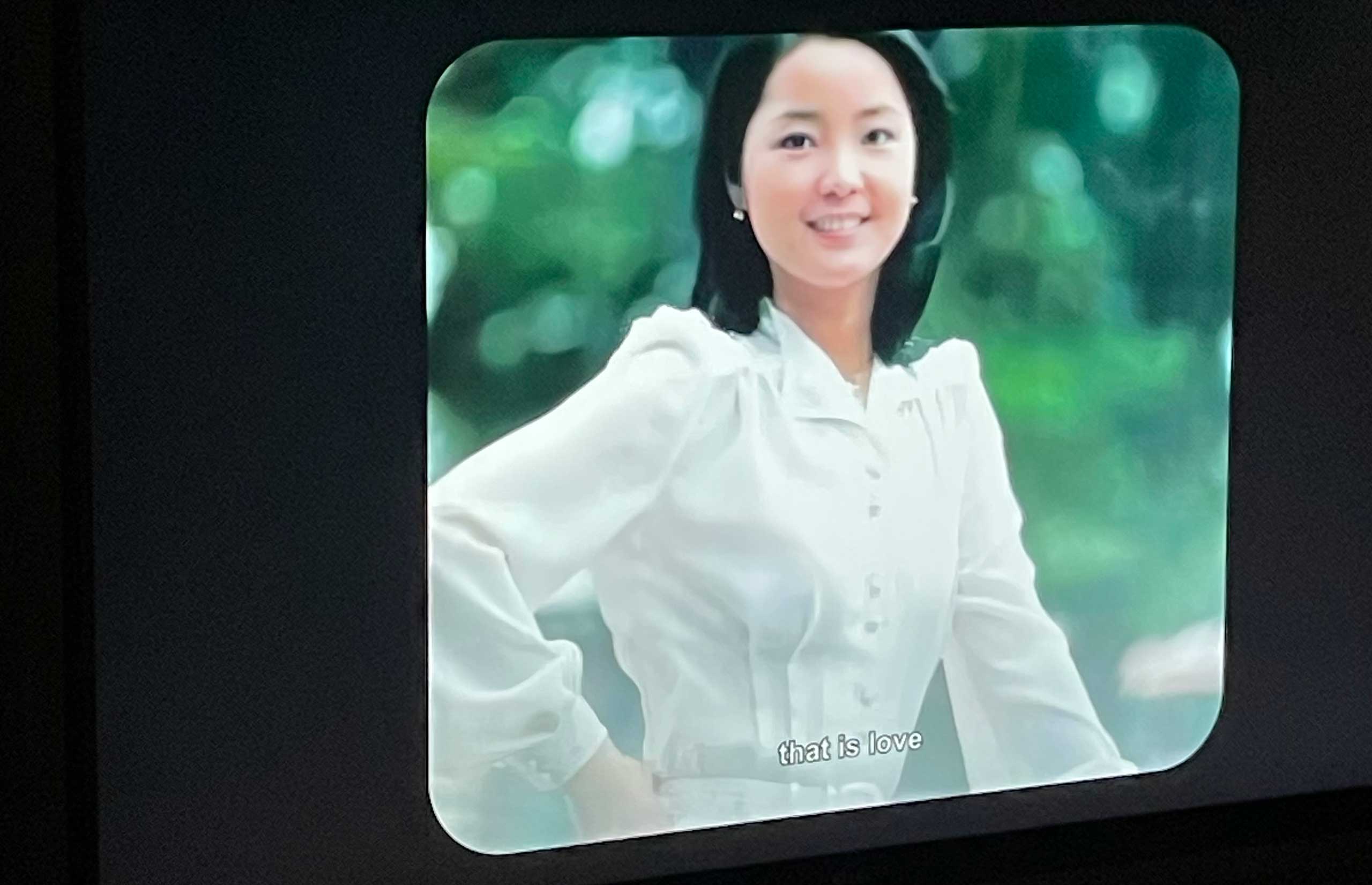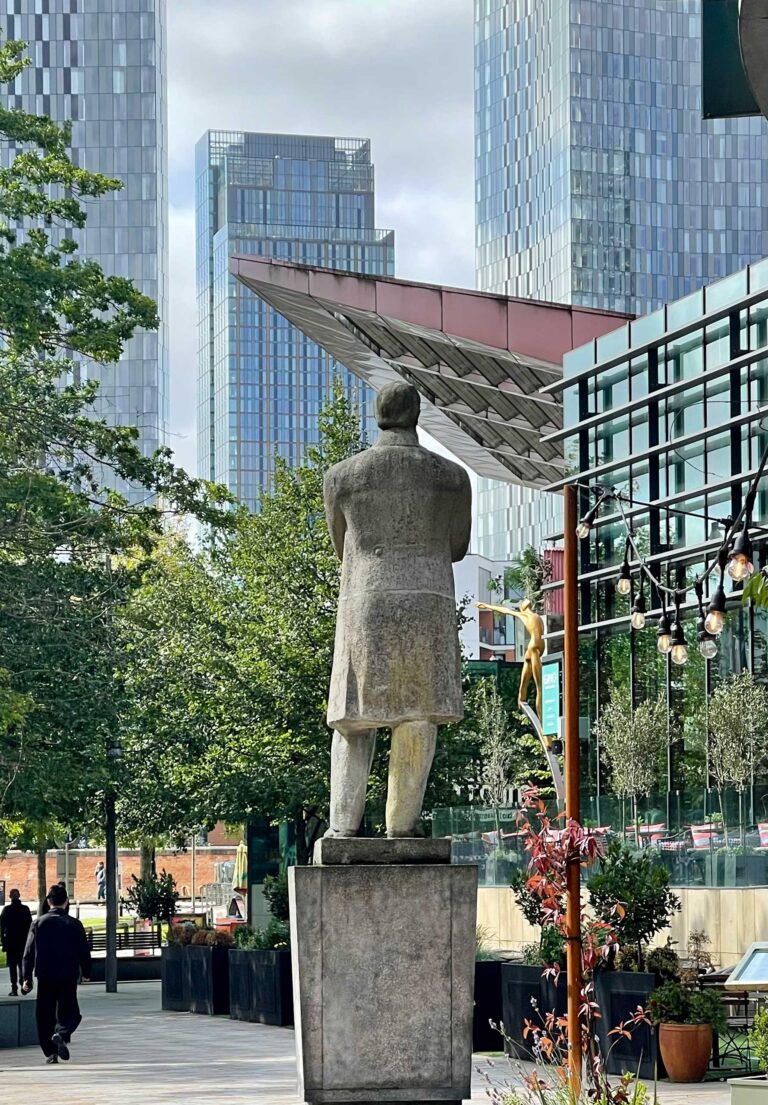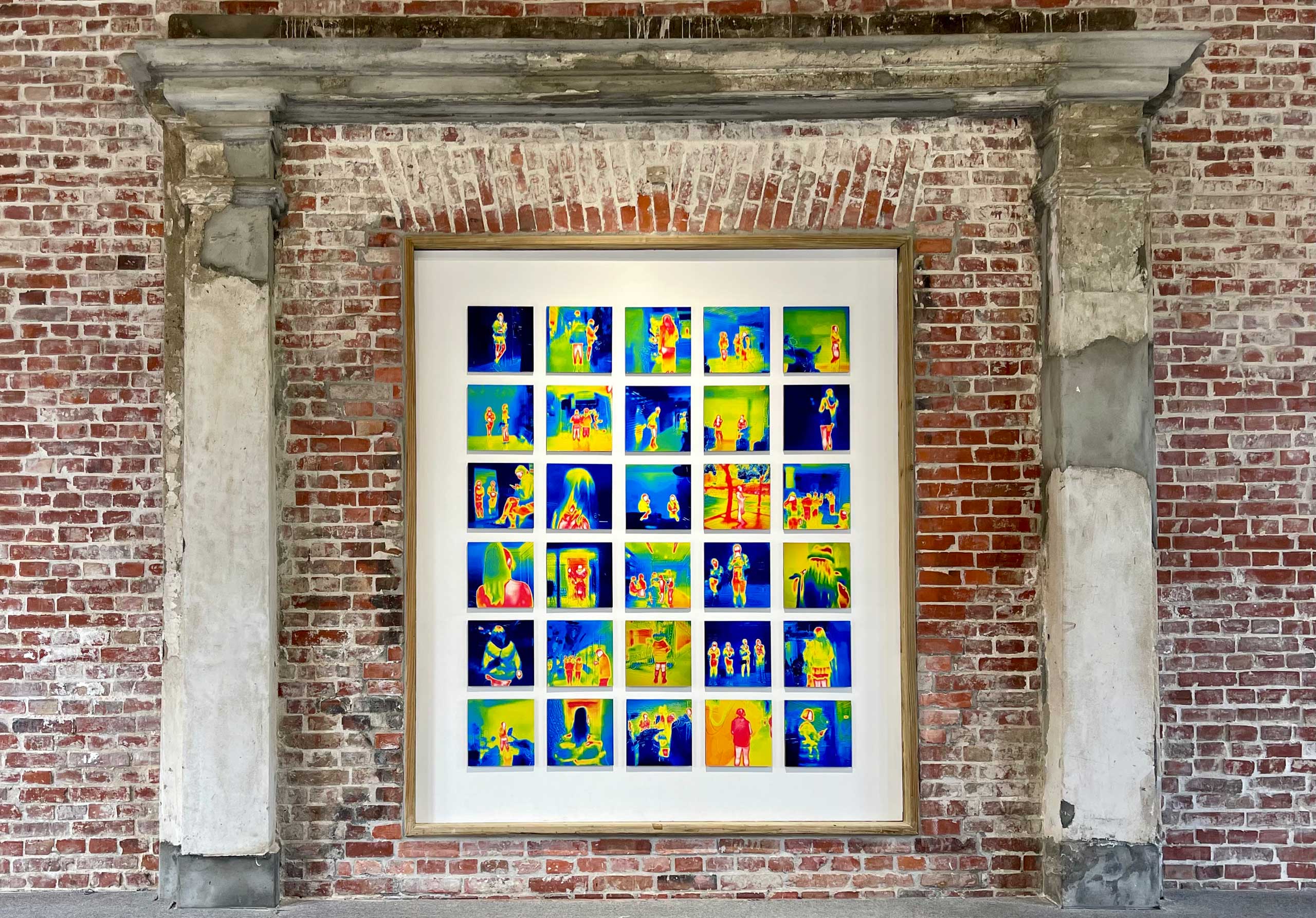Exhibition-making inevitably involves an economy of curation, a challenge particularly crucial for independent curators aiming to realize their curatorial visions. This economic aspect reveals a wide range of concerns: from budget management and securing funding to determining the scale of exhibitions, overseeing installation processes, and navigating cultural policies. These practical concerns serve as a constant reality check, standing in contrast to the often idealized public image of curatorial practice. Moreover, this economy of curation is closely tied to what is known as “attention capital,” whereby visibility and audience engagement frequently dictate the perceived success or failure of an exhibition. In the age of social media, the immediacy of virtual spaces tends to dominate cultural discourse, yet traditional exhibitions still rely on the occupation of physical space and time. The intensifying mediation between artists, curators, and audiences has thus become critical in navigating a global exhibition landscape increasingly characterized by the proliferation of biennials, art fairs, and large-scale museum shows. Andy Warhol’s famous quote, “In the future, everyone will be world-famous for 15 minutes,”1 arrests the cultural logic underlying contemporary curatorial practices. Warhol’s words underscore the transient nature of mediated fame—a shift that not only reshapes curatorial approaches but also transforms the economic dynamics that sustain them. Paradoxically, as more attention capital is accumulated, public interest fades just as quickly as the constant cycle of content on various social media. This phenomenon reflects the economic drive to integrate user interactivity into the calculation of communication, yet in doing so, it overlooks the essential substance of communication. By fixating on measurable audience reactions, it reduces, regulates, and commands the production of illusory subjects, confining it to a quantifiable limited framework of emotional responses. While the economy of curation and attention capital may appear to address only the surface-level aspects of exhibition-making, this article seeks to explore the deeper, underlying forces and discursive practices at play in this multifaceted dynamic of curator, viewer and exhibition. In doing so, it suggests that the economy can be political-aesthetic, pointing toward a trajectory in which these forces are actively shaping the future of contemporary curatorial culture.
Economy as the Infrastructure
The classic definition of economy, as found in Marxist theory, posits that the superstructure of ideology is overdetermined by the economic base, or the infrastructure. It is the economy, as the foundational base, that defines and mediates social relations among people, who are “hailed” through interpellation—a process produced and reproduced by social institutions.2 In the context of curation, it is institutional factors—such as galleries, schools, canons, museums, exhibition mechanisms, and cultural policies—that operate within the art system. These factors shape the cultural economy, mediating transactions between symbolic and economic capital. Ultimately, they define the superstructure of exhibitions, determining themes, subjects, and styles. The economy, then, ensures that exhibitions uniformly produce and reproduce a specific ideology. Moreover, this relationship must also account for the tools of production, particularly the role of technology in managing and organizing the art system. As Neil Postman suggests, we are living in an era dominated by technopoly or technocracy, where technological systems dictate worldviews and operational frameworks, even within the realm of art.3
Economy defines the dynamics of credit and debt, loans and trust, grants and leases. At its core, economic relations are deeply rooted in power structures, determining who holds the upper hand and who remains on the weaker side, both in private and collective terms. Throughout history, the violence of power—the winners always prevailing—has justified itself through the relationship of debt. This dynamic enables the powerful to construct narratives that legitimize their dominance, while the seemingly neutral interplay between credit and debt is an illusion designed to reinforce the justice of the victor.4 Moreover, this system frames the victims as morally and ethically flawed. Those who are not destined to win, those without power, are not in a position to own debt in any real sense. Breaking this vicious cycle of debt requires a radical restructuring of the economic system, often achieved through revolutions or wars. This debt-based framework applies across various dimensions: from geopolitical and ethnic divisions to modernization processes, from imperial and colonial tensions to the relationship between indigenous peoples and settlers, and to the global divide between the Global South and North. In this sense, the economy becomes the most direct indicator of the apparatus of power relations.

2 Althusser’s reading of Marxism suggests that ideology functions like the unconscious, drawing on psychoanalytic meanings to explain how individuals are shaped by and participate in social structures. Louis Althusser, On the Reproduction of Capitalism: Ideology and Ideological State Apparatuses (Verso, 2014), 53-55.
Economy, the First Politics
It comes as no surprise that Aristotle’s Politics begins with economics, or Oeconomica, which etymologically means the management of a household (eco), as states and societies are conceptual extensions of a household—from farming, cleaning, tax collecting, and cooking to slavery, seeking wealth, and guarding property.5 Thus, the management of the household began with the evaluation of domesticated labour—particularly that of women, mothers, and wives—and slaves, all considered as household property. For Aristotle, the household was simply a microcosm of the city or state, an enlarged version of the home. Ironically, it is within the household that the zoon politikon, the political animal, was gathered, tamed, and disciplined. This domestic economy was a technology of control, regulating population growth for the interests of the city and state, where even the people were valued as property. Aristotle’s politics is expressed through economic means, as the “rule” of masters over slaves, and that of fathers and husbands. Although this conception of economics as politics may seem crude and simplistic, Aristotle recognized “the invisible hands” whereby values are dominated and left under the control of the oppressed. From this perspective, his political economy, which concerns the management of the city, relies on transforming human to natural relations. In the same vein, the Japanese translation for economics, 経済 (keizai), which was later adopted by the Chinese after the May Fourth Movement, carries a similar political connotation. It means“to organize the world and manage people (經世濟倫),” a reference to the Taoist classic Baopuzi (抱朴子). However, to disentangle economy from politics, as the first politics, cannot be achieved from without but must occur from within. This can only happen by rescinding the notion of values embedded in any economic structure or household, in the broadest sense.
The riddle of values—whether concerned with humans or objects, goods and things—reflects a long-standing intellectual struggle throughout history. As Aristotle noted, values are tied to both uses and exchanges: “Of everything which we possess, there are two uses; for example, a shoe is used for wearing and is also used for exchange.”6 The word value—αξία (axía)—denotes inherent quality, or an axiomatic feature related to use value. This type of value was considered essential long before the dawn of capitalism. This riddle of value deepened with Karl Marx’s analysis of “the dance of the wooden table,” a metaphor for how the mysterious surplus value operates. Marx explored how the shift from exchange value to use value dictates a total set of social relations between people and nature. The problem of value has always been central to economics as a political tool, a focus of classical economists like Adam Smith, David Ricardo, Marx, and John Maynard Keynes, all of whom worked to define formulas for comparable values, as in the setting of market price (Marktpreis). In this context, we aim to reaffirm Marx’s political economy, bending it toward the spectral dance of value—where surplus value turns ghostly in the political apprehension. Marx remarked, “One may recall that China and the tables began to dance when the rest of the world appeared to be standing still—pour encourager les autres [to encourage the others].”7 Marx was referencing the Taiping Revolution (1850-1871), a radical experiment in communal living that, despite its complex foundation, served as a prototype for a communist state. With its equality of classes and genders among 30 million people, the Taiping uprising sought to inspire others by shifting power from the top down to the grassroots level. Meanwhile, capitalism was reaching maturity, regulating communal life as Friedrich Engels describes in The Condition of the Working Class in England.8 Here, labour transforms into a commodity of ghostly character—detached from the worker’s body yet hauntingly present within the capitalist system. The dance of value, in both Marx and Engels’ critiques, is a spectral phenomenon, where material relations are veiled and mediated through labour’s alienated commodification and capitalism’s mysterious fetishism.
Bose Krishnamachari, the founder of the Kochi-Muziris Biennale, attributes the impulse behind institutionalizing the artist-curator to his own experience as an artist. He understands how artists are committed to both artistic processes and site-specificity, making them perhaps the best-suited candidates to envision and realize an international biennial for Fort Kochi, a locale with no prior precedent for such an event. From his early years as an art student and later as an educator in Bombay, he gleaned from the experiences and encounters made possible by the city, which was his classroom and studio, shaping his understanding of his artistic and subsequent curatorial practices. He therefore was interested in similar approaches from artists dedicated to situating such transformative encounters in Fort Kochi. Upon further reflection on the concept of the artist-curator within the specific context of Kochi, one can potentially trace its roots back to Krishnamachari’s tri-city solo exhibition titled De-Curating: India Contemporary Artists (2003). This exhibition, which leads one to assume an antagonistic position early on towards the curatorial, upon deeper engagement reveals a dissatisfaction with the curatorial research of the time.

Beyond Measure (the Virtual) and Immeasurable
The ontological dimension of value—where power relations are ordered—must be transgressed to disrupt its coherent measurement and unity. From Plato’s notion of intrinsic properties to Kant’s idealism of worthiness (Würdigkeit), and even Marx’s theory of value, which are all rooted in a metaphysical tradition dependent on measurement—the instrumentalization of any given value—there is discovered a repetitive pattern of universalizing. Since the Age of Reason, the project has been to measure and normalize everything under a divisible unity, even reason itself. To revalue, therefore, is not merely to re-evaluate existing values but to question the very construction of value as a concept, recognizing the epistemological break that comes with the notion of immeasurability—an act of transvaluing value itself. Within subject-object relations, there is no transcendent, a priori principle that amplifies the finite being of things. Instead, virtuality designates a vital dimension that is beyond measure. In Deleuzian terms, to become a “monstrosity” is to step beyond measure, to challenge the determinism of value imposed by power.9 This is especially true in the context of economy, seen as the management of a household or community. How can we measure virtuality, potentiality, or monstrosity? As Antonio Negri and Michael Hardt argue:
Beyond measure refers to the vitality of the productive context, the expression of labor as desire, and its capacities to constitute the biopolitical fabric of Empire from below. Beyond measure refers to the new place in the non-place, the place defined by the productive activity that is autonomous from any external regime of measure. Beyond measure refers to a virtuality that invests the entire biopolitical fabric of imperial globalization. By the virtual, we understand the set of powers to act (being, loving, transforming, creating) that reside in the multitude.10
The vitality of production from the weak side signifies an upward trajectory of multitudinous energy, capable of morphing and transforming established unities such as shifting demographics, class divisions, and the boundaries amongst humans, animals, and things. This dynamic is especially pronounced in the virtual dimensions, where virtual spaces and objects, synthetic images, and spectral simulacra give way to ideal virtual realities—constantly oscillating between presence and absence. The construction of a multitudinous community can thus be reconfigured by new, pre-constitutional forms of management that disrupt traditional value structures, flipping the economy upside down. In this context, the virtual emerges as a site of radical potentiality, challenging the rigid boundaries of conventional economy, politics, and power relations, opening up new spaces for autonomy and creativity from below. As Brian Massumi asserts, “value is too valuable to be left in those hands.”11 This aligns with Marx’s concept of surplus value, where virtuality is seen as the movement of excessive labor, reclaiming itself as a vital force that continuously generates new social and ecological relations. Here, the virtual transcends the calculative economy of exchange, becoming a field where creative, unquantifiable forces operate beyond the reach of capitalist commodification, allowing for the emergence of new solidarities and forms of collective life.
10 Michael Hardt, Antonio Negri, Empire (Harvard University Press,2000), 357.
Libidinal Economy and the New Household
On the other hand, there is a dimension of immeasurability that pertains to what cannot be quantified on a fixed scale—affect, attention, desire—what Jean-François Lyotard termed the libidinal economy.12 These elements escape the loop of capital and monetary exchange. While attention can be captured and commodified within the framework of the attention economy—subject to managerial control, surveillance, and normalization—the excess and intensity of attention exceed what can be calculable or measurable. Lyotard’s notion of jouissance, the overflow of pleasure and pain, embodies this intensity of emotion, driving what he describes as the surplus desire. The metamorphic and polymorphous nature of libidinal energy flows freely, disrupting the household designed to negate or contain it. Despite all attempts to control desire, its excess resists reduction to pure exchange value and translate to capital. While the attention economy easily turned to the eternal loops of capital to money and falls to Warhol’s quick fading “15 Minutes of fame,” libidinal economy overflows where excess remains beyond full capitalization. Just as desire, cultural pride, and prestige evade strict quantification, the attention economy limited itself in the boundaries of normative economic systems, as the less than a second of clicking of likes, friend, unfriend. In contrast, the libidinal economy signals the emergence of a paradigm that exists outside the economic and political structures imposed by traditional capital. It allows the potency of immeasurable affect to manifest, challenging the constraints of commodified attention and opening up a space where the invaluable takes precedence over the calculable.

10 Michael Hardt, Antonio Negri, Empire (Harvard University Press,2000), 357.
Ultimately, we must return to the original meaning of economy—oikonomia, or the management of the household—and redefine it in terms of a new set of domestic relations. This redefinition must exceed the limits of traditional notions of the household, reaching into domains where the immeasurable and the beyond-measure become operative categories. In this expanded view, the concept of the household cannot be understood merely as a hierarchical, patriarchal structure of authority but must instead be reimagined as an emergent, bottom-up familial order. This shift goes with Pierre-Félix Guattari’s ideas of anti-Oedipal subjectivities, wherein social, mental, and environmental ecologies intersect and multiply the very forms of subjectivity.13 Such a reconfiguration of the household extends into a horizontal paradigm, where kinship-making and the cultivation of “odd kin” organize new relationships between the Self and the Other. These kinships, rather than conforming to normative categories of new family or relational identity, are marked by what Donna Haraway terms as curious practices that resist the familial orders.14 They produce something additional, something strange, to displace the normative structures of domestic life. In this way, the economy becomes entangled with the aesthetics of emancipation, where both the household and home must be rethought as sites of radical political potentiality, which is not merely a sociological task but a meta-political project, like those projects done by Chantal Mouffe and Jacques Rancière, who challenge the very boundaries between politics and aesthetics. As such, the once-fixed familial borders blur, opening new pathways for political relations to emerge and for new forms of subjectivity to take root. This means , in essence, a reversal of Aristotelian politics, wherein the oikos, the domestic realm, returns as a locus of political reimagination, rendering the household as a site for contestation and emancipation of the eco-political order.
As this issue of Curatography tackles the economy of curation—where curating becomes curatorial and exhibition-making turns exhibitionary—it adopts a deconstructive approach. In essence, it seeks to challenge the core values of the economy—management, measurement, debt, and household—tearing them apart from within in search of an emancipatory exit, as articulated in Lee Tzu-Tung’s highly conceptual work and writings. With a background in Agricultural Economy, Lee views the economy as inherently political, challenging fundamental issues such as exchange, surplus value, debt, credit, property, and ownership. Through her exploration of global logistics—from indigeneity to NFTs, AIDS, and technology—Lee reinterprets the “thing-in-itself” of Capital as a “thing-in-commons,” creating a new economic system whereby conventional notions of destitution, circulation, production, and consumption are derailed. Meanwhile, Freda Fiala examines the evolving role of independent curators like River Lin and Tang Fu Kuen in shaping the cultural trajectories of the newly built Taipei Performing Arts Center (TPAC). Designed by OMA and jointly led by Rem Koolhaas and David Gianotten, TPAC has been nicknamed by locals as “Preserved Egg and Tofu.” Independent guest curators are invited through the hospitality of the host institution, where they assume a “ghost-like” presence in their nomadic curatorial approaches. This fluidity transforms the performing arts space into a multi-layered household, initiating a process-oriented, meta-cultural economy shaped by transnational spectatorship and collective poetic experiences. Within this framework, the avant-garde must be reconfigured in the context of performing arts, architecture, and cultural policy on both global and local scales. Luke Y.C. Yang’s article begins by re-examining Giorgio Agamben’s research on the economy, both in its philosophical and theological dimensions. He charts a path between consensus and dissensus, where antagonistic and diagnostic socialities can establish true equality—a foundational principle of emancipation. In this issue, the economy is becoming aesthetics, contributing a small but significant part to our broader understanding of contemporary curatorial culture.
1 While the origin of Andy Warhol’s famous statement is still somewhat dubious, the brochure for his important international exhibition at the Moderna Museet in Stockholm in 1968 printed the statement and attributed it to him.
2 Althusser’s reading of Marxism suggests that ideology functions like the unconscious, drawing on psychoanalytic meanings to explain how individuals are shaped by and participate in social structures. Louis Althusser, On the Reproduction of Capitalism: Ideology and Ideological State Apparatuses (Verso, 2014), 53-55.
3 Neil Postman, Technopoly: The Surrender of Culture to Technology (Vintage Books, 1993)
4 There is no shortage of punishment for debtors, ranging from psychological to physical torture. David Graeber, Debt: The First 5000 Years (Melville House, 2011) 288.
5 Aristotle, Politics, Trans., Benjamin Jowett (Batoche Books, 1999)
6 Aristotle, Book I, 14.
7 Karl Marx, Capital: A Critique of Political Economy. Edit. Frederick Engels, Trans. Samuel Moore and Edward Aveling (Progress Publishers, 1887) 56.
8 Friedrich Engels, Condition of the Working Class in England (Panther Edition, 1969)
9 Deleuze, Gilles, and Félix Guattari. A Thousand Plateaus: Capitalism and Schizophrenia. Trans., Brian Massumi (University of Minnesota Press, 1987) 233.
10 Michael Hardt, Antonio Negri, Empire (Harvard University Press,2000), 357. https://kafila.online/2023/05/17/decoding-jan-shakti-at-national-gallery-of-modern-art-there-is-no-schindlers-list-sandip-k-luis
11 Brian Massumi, 99 Theses on the Revaluation of Value (University of Minnesota Press, 2018), 3.
12 One of the figures Lyotard employs is “the great ephemeral skin,” in which intensification and polymorphism operate in a differential rather than oppositional trajectory. Only an army of metaphors – mouths, lips, fingertips, nails – can capture such a radical condition of jouissance. Jean-François Lyotard, Libidinal Economy, Trans., Trans., Hamilton Grant (Indiana University Press, 1993) 1-2.
13 Such an extension can be observed in the praxis of ecosophy, which extends naturally into the realms of the natural, social, and psychological households. Felix Guattari, The Three Ecologies, Trans. Ian Pindar and Paul Sutton (Athlone Press, 2000)
14 Both “making-odd-kin” and “curious practice” are important concepts from Donna Haraway. The idea of odd kinship aligns well with curious practice on a conceptual level, as both challenge traditional structures and invite new ways of thinking about relationships and interactions. Donna J. Haraway, Staying with the Trouble (Duke University Press, 2016), 126.
Share
Author
Hongjohn Lin is an artist, writer and curator. Graduated from New York University in Arts and Humanities with Ph.D. He has participated in exhibitions including Taipei Biennial(2004), the Manchester Asian Triennial 2008, the Rotterdam Film Festival 2008, and the 2012 Taipei Biennial, Guangzhou Triennial (2015), and China Asia Biennial (2014). Lin was curator of the Taiwan Pavilion Atopia, Venice Biennial 2007, co-curator of 2010 Taipei Biennial (with Tirdad Zolghadr), and numerous curatorial projects such as Taizhong’s The Good Place (2002) and Live Ammo (2012). Lin is serving as Professor at the Taipei National University of the Arts. For the past 10 years, he has been working on project based on George Psalmanazar, A fake Taiwanese in the early Enlightenment. He is interested in transdisciplinary arts, politics of aesthetics, and curating. His writings can be found in Artco magazine, Yishu magazine, international journals, and publications of Art as a Thinking Process (2010), Artistic Research (2012), Experimental Aesthetic(2014), Altering Archive: The Politics of Memory in Sinophone Cinemas and Image Culture (2017). He wrote the Introductions for Chinese edition of Art Power (Boris Groys) and Artificial Hells (Clair Bishop) . His books in Chinese include Poetics of Curating (2018), Beyond the Boundary: Interdisciplinary Arts in Taiwan, Writings on Locality, Curating Subjects: Practices of Contemporary Exhibitions.








